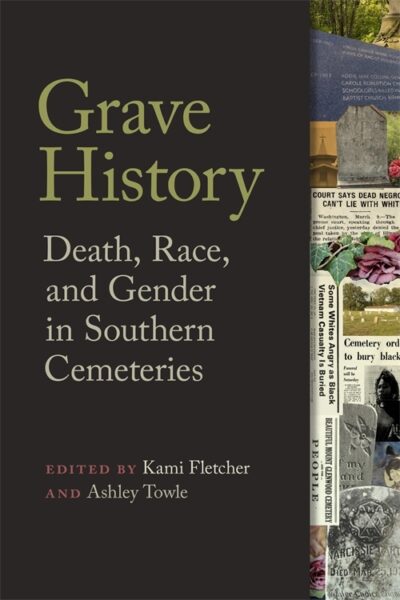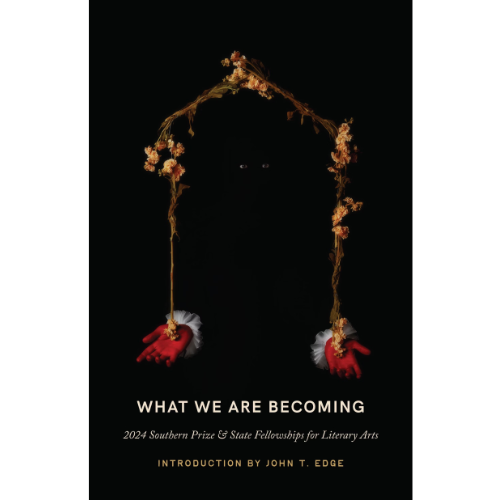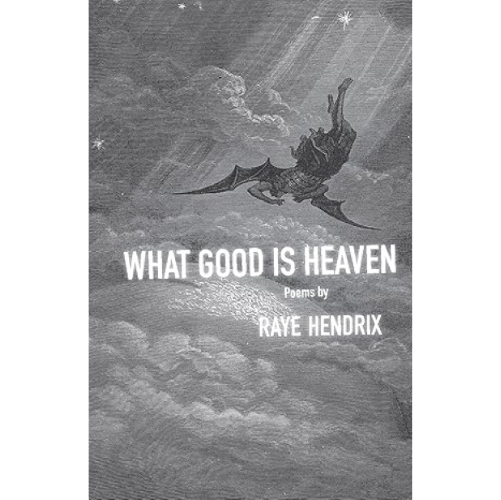Grave History: Death, Race, and Gender in Southern Cemeteries
Edited by Kami Fletcher and Ashley Towle
The University of Georgia Press, 2023
Paper: $32.95
Nonfiction; Academic
Reviewed by Mollie Smith Waters
Grave History: Death, Race, and Gender in Southern Cemeteries is a collection of scholarly essays about various cemeteries throughout the American South. The book focuses on the historical and cultural significance of the selected cemeteries and what they can tell us about how cemeteries helped promote and sustain race, class, and gender discrepancies throughout the South.
In their introduction, editors Kami Fletcher (Albright College) and Ashley Towle (University of Southern Maine explain, “Grave History is the first volume to use southern cemeteries to interrogate and analyze southern society and the construction of racial and gendered hierarchies from the antebellum period through the dismantling of Jim Crow.” The book’s nine chapters go on to explore different cemeteries, their histories, and their significance.
For example, Chapter 6 is titled “‘We Have No Further Interest in These Patients until They Die: The U. S. Public Health Service’s Syphilis Study and African American Cemeteries in Macon County, Alabama.” Carroll Van West is the author of this chapter; he is a historian and a professor at Middle Tennessee State University. In his piece, Van West provides the reader with historical information about the 1932-1973 study of syphilis in African Americans in the Macon County-area in Alabama; the study was conducted at Tuskegee University, and it became known as the “Tuskegee Study of Untreated Syphilis in the Negro Male.”
In addition to providing important background information about the study, Van West explores how the men became little more than human lab rats and examines how they were failed at every turn. Yet, this book is primarily about cemeteries, so Van West does not stop his chapter with simply an exploration of the inhumane way these men were treated. He also examines how the cemeteries in which the patients of the study were buried (the two he examines are Creek Stand AME Zion Cemetery and Shiloh Missionary Baptist Church Cemetery) have been overlooked as historically important until recently when the congregations, local historians, and area activists worked to get the churches and their cemeteries both state and national recognitions.
This chapter is representative of the other pieces selected for the book. Some of those other chapters include insights on how early cemeteries in America were designed to keep segregation in place, how African American history and genealogy are often preserved in cemeteries by tracing symbology through such early organizations as the Mosaic Templars of America Zephroes, and how many southern African American cemeteries have been neglected and vandalized over the years.
Grave History is a remarkable deep dive into the American South’s history, its cemeteries, its injustices, and its move toward a more unified future. The book is an academic work, and for the lay reader, it may prove to be difficult to comprehend at times. However, that should not deter anyone from attempting to read and, thereby, to profit from its offerings.
A teacher for 25 years, Mollie Smith Waters is a professor of composition, literature, theater, humanities, and speech at Lurleen B. Wallace Community College’s Greenville Campus. Waters writes for various publications, including The Greenville Standard, Encyclopedia of Alabama, and Alabama Heritage. She has been an Alabama Roads Scholar Speakers Bureau lecturer for the Alabama Humanities Alliance for almost a decade; her most popular program is Alabama Cemeteries & Symbols. Each spring and fall, she leads cemetery tours in her native Butler County, and she has a Facebook page called That Cemetery Lady.







Leave A Comment
You must be logged in to post a comment.